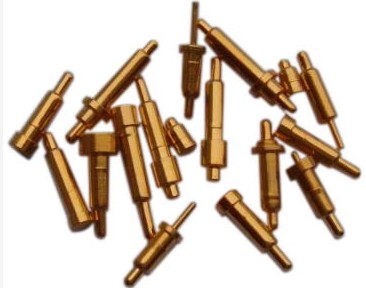Time:2025-07-01 Views:1 source:News

High - frequency probes are specialized tools used for testing high - frequency circuits and components, and they require careful handling to ensure accurate and reliable test results.
Before use, it is essential to ensure a secure connection between the high - frequency probe and the testing instrument. Any loose connection can lead to intermittent contact, resulting in signal loss or inaccurate readings. Technicians should check the connectors for signs of wear or damage and ensure that they are tightened properly according to the manufacturer's instructions. Additionally, the impedance matching between the probe and the test instrument should be verified. Incorrect impedance matching can cause signal reflections, which can severely distort the test signal and lead to incorrect measurements.
During the testing process, maintaining a stable test environment is of utmost importance. High - frequency signals are highly susceptible to external interference. Therefore, the test area should be shielded from sources of electromagnetic interference (EMI), such as nearby electrical equipment, wireless transmitters, or power lines. Temperature and humidity should also be controlled, as significant fluctuations can affect the electrical properties of the probe and the device under test. For example, extreme humidity can cause moisture to condense on the probe, altering its impedance and signal - transmission characteristics.
The lifespan of high - frequency probes should be closely monitored. Probes are subject to wear and tear, especially at the contact tips, due to repeated use and physical stress. A worn - out tip can cause poor contact with the test device, leading to inconsistent or inaccurate test results. Regular inspection of the probe tips for signs of wear, such as flattening or chipping, is necessary. Once the tip shows signs of significant wear, the probe should be replaced in a timely manner. Some high - frequency probes also have replaceable parts, such as contact tips or cables, which can extend the overall lifespan of the probe if maintained properly.
Strictly following the operation manual is crucial. High - frequency probes often have complex operating procedures, and any deviation from the correct method can lead to inaccurate results or even damage to the probe or the test equipment. Operators should be thoroughly trained on the proper use of the probe, including how to adjust the probe settings, such as the attenuation factor, for different test requirements.
Safety is also a key consideration. High - frequency probes may be used in high - voltage or high - power testing environments. Operators must take appropriate safety precautions, such as wearing insulated gloves and safety glasses. They should also be aware of the electrical hazards associated with the test equipment and ensure that the probe is properly grounded to prevent electrical shocks. By adhering to these precautions, technicians can ensure the accurate operation of high - frequency probes and obtain reliable test results in high - frequency testing applications.
Read recommendations:
American standard to Tesla adapter (new model)
European standard charging cable
Cost - effectiveness analysis of National standard crown spring
Industrial inspection drone sensor port pogopin supporting -40°C to 125°C wide temperature operation